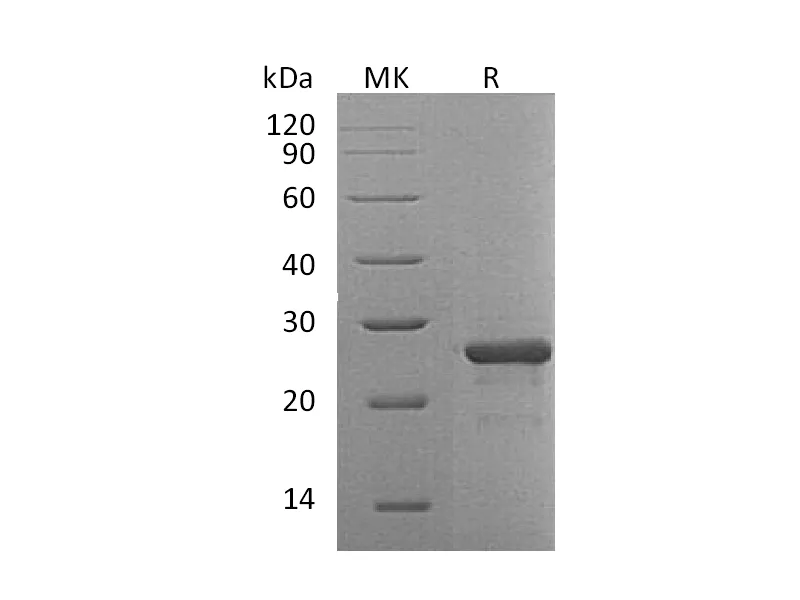
Size2:50μg price2:$378
Size3:500μg price3:$1890
| Name | Recombinant Human FGF-19 (N-6His) |
| Purity | Greater than 95% as determined by reducing SDS-PAGE |
| Endotoxin level | <0.01 EU/µg as determined by LAL test. |
| Construction | Recombinant Human Fibroblast Growth Factor 19 is produced by our E.coli expression system and the target gene encoding Phe27-Lys216 is expressed with a 6His tag at the N-terminus. |
| Accession # | O95750 |
| Host | E.coli |
| Species | Human |
| Predicted Molecular Mass | 23.5 KDa |
| Buffer | Lyophilized from a 0.2 μm filtered solution of 20mM Tris-HCl, 150mM NaCl, 1mM EDTA, pH 8.0. |
| Form | Lyophilized |
| Shipping | The product is shipped at ambient temperature.Upon receipt, store it immediately at the temperature listed below. |
| Stability&Storage | Lyophilized protein should be stored at ≤ -20°C, stable for one year after receipt. Reconstituted protein solution can be stored at 2-8°C for 2-7 days. Aliquots of reconstituted samples are stable at ≤ -20°C for 3 months. |
| Reconstitution | Always centrifuge tubes before opening.Do not mix by vortex or pipetting.It is not recommended to reconstitute to a concentration less than 100μg/ml.Dissolve the lyophilized protein in distilled water.Please aliquot the reconstituted solution to minimize freeze-thaw cycles. |
Alternative Names
Fibroblast growth factor 19; FGF-19; FGF19
Background
Fibroblast growth factor 19 (FGF19) is a secreted protein which belongs to the FGFs family. FGF19 is expressed in fetal brain, cartilage, retina, and adult gall bladder. FGFs modulate cellular activity via at least 5 distinct subfamilies of high-affinity FGF receptors (FGFRs): FGFR-1, -2, -3, and -4, all with intrinsic tyrosine kinase activity. FGFRs can be important for regulation of glucose and lipid homeostasis. FGF19 has important roles as a hormone produced in the ileum in response to bile acid absorption. It has been shown to cause resistance to diet-induced obesity and insulin desensitization and to improve insulin, glucose, and lipid profiles in diabetic rodents. FGF19 can be considered as a regulator of energy expenditure.
Note
For Research Use Only , Not for Diagnostic Use.
